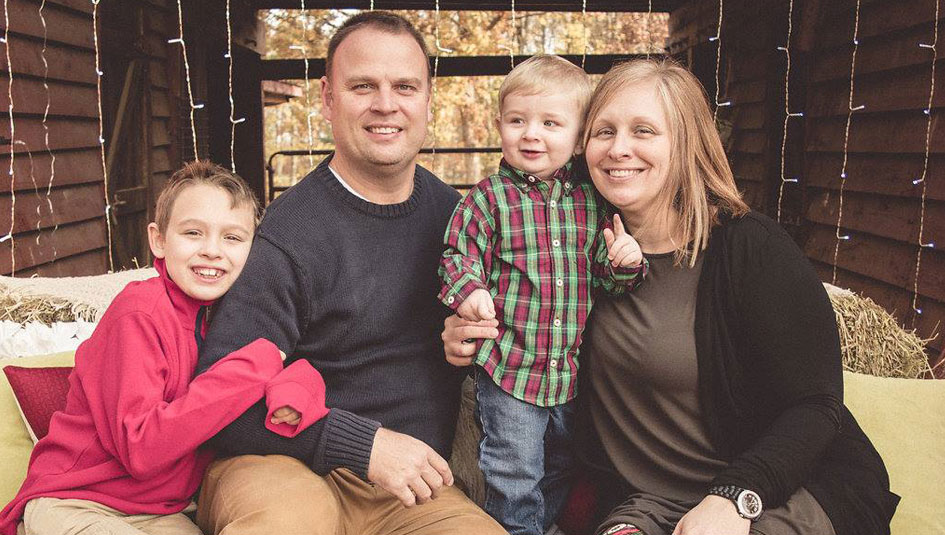Living With T1D and Asperger’s

This is the second part in a three-part mini series on Type 1 diabetes and autism. Read Part One here.
Cari Bridges’ son, Westin, was diagnosed with Type 1 diabetes in 2011 at age two. As individuals familiar with this condition know, diabetes requires a lot of daily regimens, particularly surrounding meals. But shortly after Westin turned 3, he became very methodical in other activities, as well. “At night we had to do the exact same bedtime ritual right down to saying the exact same things every night before he could go to sleep. His insistence on these rituals caused us concern that something was a bit off.” So, his parents contacted his doctor, who referred Westin to a developmental pediatrician. There was a long waitlist, so they couldn’t be seen for several months.
In the meantime, Bridges contacted the local school system to initiate the process of evaluating him for services. He met the educational threshold for Autism and qualified for support. “However,” Bridges relates, “we chose to put developmental delays as his label on his initial IEP because we preferred to have the diagnosis from the medical perspective as well.” That diagnosis came when they finally got in with the specialist, which was around his fourth birthday. Westin had high functioning autism (also known as Asperger’s).
For the next few years, he required a lot of time and attention from both of his parents. For this reason, his mother is grateful that he was an only child until the age of 7. She’s also grateful that his T1D came early, since, as a result, he has never known anything else. “For Westin, it is just his way of life.” He has never resisted glucose tests or insulin injections.
In some ways, Westin’s T1D and Autism work together. Bridges explains, “Caring for a child with T1D requires a lot of routine. As a kid with Autism, Westin definitely thrives on this routine and knowing what to expect.” But the two conditions conflict, too. “Westin is a very picky eater,” and he likes to eat the same foods. “Every day of school since kindergarten, he has eaten a hot dog, chips, applesauce, juice box, two cookies, and a pudding cup. Every single school day. Every single lunch.” He is unwilling to try new foods, which might be more compatible with diabetes. And because of his diabetes, his parents aren’t as effective in getting him to try new ones. “If he didn’t have T1D, we would likely fix a meal and tell him he could either eat it or leave it. But because of T1D, we can’t afford the luxury of waiting him out.”
Read “When Diabetes is Just One Branch of a Tree of Needs”
Another challenge is treating low blood sugars, since this, too, involves a routine. “It is very frustrating when your child’s blood sugar is low and he has to sort all the M&Ms by color before he will eat them.” Recognizing lows has gotten easier with time. At first, he didn’t clearly communicate his symptoms, so his parents had to learn his lingo. He is more capable of recognizing them now, but he “can become so immersed in whatever he is doing—ipad videos or games, playing trains, reciting a story or book—that he will not stop to attend to a low blood sugar until he is finished with his activity. Continuous glucose monitoring has helped with this.
Despite these challenges, Bridges counts their blessings. “We have incredible doctors.” She says that Westin’s general practitioner adores him, and she has taken time to get to know him—his likes, dislikes, interests, and quirks. It was she who knew to check his blood sugar on the fateful day and refer him to an endocrinologist. The endocrinologist, too, “is phenomenal.”
Westin is the biggest blessing. “He has given us so much love and joy,” says Bridges. “He has stretched our patience, he has pushed us outside our comfort zone, and he has opened our eyes to the challenges of life with a chronic illness. But he is also kind and smart and loving and funny, and he has this twinkle in his eye that melts your heart.”
What else is Westin like? “He can tell you anything you ever wanted to know and didn’t want to know about Thomas the Train. He can recite books and stories he has read or heard only a couple times. He can sit down at the piano and play songs by ear. He is the most amazing little boy, and we feel fortunate to be his parents.”
Caring for a child with T1D and autism is “not for the faint of heart.” But there is a lot of hope for parents of newly diagnosed children. Bridges advises those parents, “Know that this journey will not be easy, but you can do it, and it’s all worth it.”
Do you have an idea you would like to write about for Insulin Nation? Send your pitch to submissions@insulinnation.com.
Thanks for reading this Insulin Nation article. Want more Type 1 news? Subscribe here.
Have Type 2 diabetes or know someone who does? Try Type 2 Nation, our sister publication.